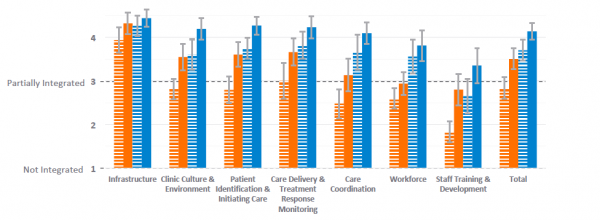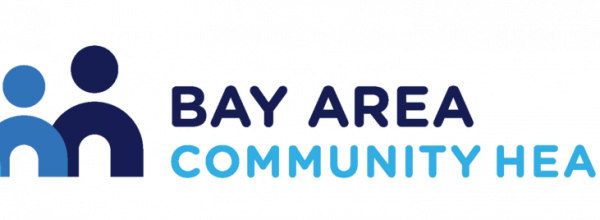CCI Spoke with Eduardo Villarama, MD, Regional Medical Director at Golden Valley Health Centers, to learn about what steps they took upon inception to implement a successful medications for addiction treatment (MAT) program.
 You spoke about how important it was to get senior leadership on board in the early stages of your program development. Why was this important and what approach did you take?
You spoke about how important it was to get senior leadership on board in the early stages of your program development. Why was this important and what approach did you take?
Getting buy-in from senior leadership for big and important decisions for the organization was key. We wanted to leverage their support when working with the rest of the departments that would be critical players in the process of implementing the MAT program structure.
We had a discussion with our clinical leadership about how we can help with the opioid epidemic that affects our patients, their families and the whole community we serve. We were aware that funding was available to start a program and that we had the resources to put a team together so we presented this to our leadership. We described why implementing a MAT program was important, how we were going to put the program together, and what resources and support were needed. We explained how important it was to start a new service line for the organization and made it clear that their support and understanding of the process was critical.
You provided a stigma training early on to department leaders and your staff. Why was this important?
We want to make sure that everyone is aware of or becomes more informed about opioid addiction, the science behind it and the treatment available. We also want to ensure we understand how each of us as an organization plays a role in helping the affected individual and their family get to treatment and eventual recovery.
We looked at different materials and videos (thanks to our coach, Shelly Virva) and found a video about the science of addiction by Dr. Waller. It is simple, easy to understand and short (less than 30 minutes).
We wanted to explore all possible avenues to reach everyone in our organization from the higher up down to the line staff. Since we are a big organization with more than 1,000 employees, we need to be cost effective with all our efforts.
We presented the video to senior leadership, then to all department directors (medical, nursing, behavioral health, billing, finance, marketing, outreach, facilities, IT, Call Center and scheduler, maintenance and operations) to get feedback regarding the video’s effectiveness. We then required that a stigma training video be mandatory learning for all employees. We hold department meetings – monthly and quarterly – and it became mandatory to watch the video as a group during one of these meetings. We also got the video to be a required module to review for newly hired employees and are now working on making it a mandatory module every two years.
Some MAT teams have difficulty getting providers to become X-waivered. How did you get providers to buy in?
We started by encouraging all our regional medical directors and our chief medical officer to obtain the x-waiver. We also provided incentives (small but fair monetary compensation) to any provider who would obtain the X-waiver on their own time. We also sent a clear message that it is voluntary and that providers would not be mandated to prescribe but might be asked to cover only if the main prescribers (e.g., CMO, Regional Medical Directors) are not available. I clearly communicated that they would get the support and mentoring that they would need should they be interested in participating as a prescriber for MAT.
One key to your program’s success was identifying a strong, passionate team. How did you identify your team members and how did this contribute to your program’s success?
We identified key influencers for each department and invited them to be a part of our MAT Core Team. The MAT Core Team is where we review and discuss all the aspects of the program, including the development of policies and procedure as well as protocols that will be beneficial for each department and the staff that they supervise or manage.
The key influencers we identified have great reputations, work ethic and superior communication skills. They are also well informed and as participants who helped build the program, it is easier for them to relay consistent information to subordinates knowing they were participants and contributors to the decision making. This is a lot of work and requires a lot of patience but it is well worth it.
We spoke about your no wrong door policy when patients seek treatment. Can you tell me about your intake process when a patient seeks treatment?
Our No Wrong Door Policy is simply that no patient or inquiries are turned away. We formed a MAT Core Team. I’m the director and lead. Other people who are on the team include MAT Nurses, Behavioral Health Clinicians and Recovery Service Specialists (SUD Counselors). They can be reached by patients, families, staff and organizations with inquiries about MAT by calling our toll-free main number. Our call center representatives take the caller’s information and either call the team directly or send a task with a 1 business day turn-around time.
When a patient calls to start treatment, they will be connected to either a nurse or a Behavioral Health Clinician or Recovery Support Specialist who can do the initial interview and part of the intake. This includes getting the Treatment Need Questionnaire (TNQ) filled out if possible. Depending on the need, the patient is scheduled with a MAT Nurse for intake. The intake is coordinated with a prescriber and follow the process of the enrollment from there.
We try to make it as simple as possible for the patient to be connected and start treatment. Initially, we had dedicated induction days and times. Now we do in-office or home-based inductions any day of the week from 8 am – 5pm.
On the February 28 data webinar, you’re going to speak more about how your clinic created an accepting and welcoming environment and also improved care coordination. What are other changes you and your team have been working on that you are most proud of?
Now that we have more patients enrolled, we are learning so much more about them. Our MAT team will always step up in terms of making recommendations to make things simpler and easier for patients to comply and stay in the program based on available resources and support that we can provide. Everyone has an opinion and a say in terms of how we can better run the program. We empower them to do so and let patients guide us in understanding their needs better. The communication channel is open to everyone.
Because of the program we all became better versions of ourselves. Now that other care teams and departments are seeing the effect of the program on the lives of our patients, they want to help and contribute. This is how we got our pharmacy to partner with us to help us better accommodate our patients and how we got to partner with Uber Health to provide transportation for patients for all their travel needs that relate to MAT.
This interview has been edited and condensed for clarity.
Find this useful or interesting? We’re constantly sharing stuff like this. Sign up to receive our newsletter to stay in the loop.








